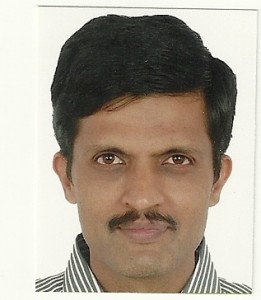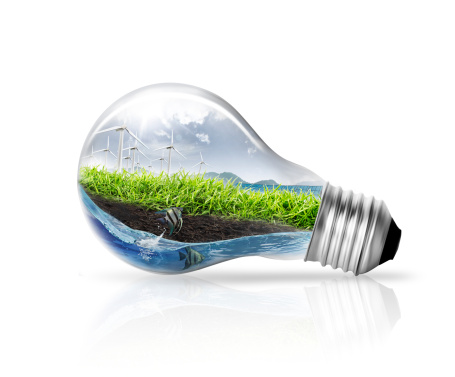Getting patented has immense aspirational value for product developers, but it is a long drawn process and takes normally anything between 5-8 years. Our story this time is about how a bunch of very intelligent individuals, who got together to build a product and have it patented within two years. If it is aspirational to have a patent against one’s name, it is certainly inspirational, the time frame in which it was achieved.
We got talking to Anand, who is based out of Bangalore, and was only 15-days old at Vigyanlabs handling the marketing activities there. The passion with which he spoke, belied his short stint and seemed as if he had spent his entire lifetime in the organisation. Shortly thereafter, we were joined by Srini & Vatsa, the founders of Vigyanlabs. Hugely experienced, cumulatively they both have 50 + years (Vatsa 30 + & Srini more than 20) of building  products and software architecture in very large organisations like HP, IBM & Hughes Network Systems. Both had held senior positions in HP, where Vatsa was the Chief architect, and with Srini later, went on to hold Senior Technical Positons at Dell-Perot, just before starting Vigyanlabs. Vatsa had also worked in Processor Systems India, where he did some very innovative and cutting-edge work. These would prove to be building blocks, someday. A very potent combination indeed, which helped file 9 Patents. Slowly but surely the spirit of building an Indian product was taking shape.
products and software architecture in very large organisations like HP, IBM & Hughes Network Systems. Both had held senior positions in HP, where Vatsa was the Chief architect, and with Srini later, went on to hold Senior Technical Positons at Dell-Perot, just before starting Vigyanlabs. Vatsa had also worked in Processor Systems India, where he did some very innovative and cutting-edge work. These would prove to be building blocks, someday. A very potent combination indeed, which helped file 9 Patents. Slowly but surely the spirit of building an Indian product was taking shape.
Early days:
After calling it quits with their present employers, the duo spent two weeks in just defining Vision & Mission of the company that they would build, and establishing short-term & long-term goals. This brainstorming session helped them in creating the DNA : It was going to be an innovative Science & Technology Organisation; it would focus on green technology and social responsibility to be a key driver. All this would be achieved by harnessing the power of teamwork. The customer and his needs would be primary to all business concerns. A deep-dive helped identify the three major problems that the world was facing: Food, Environment & Energy. The seeds were sown – it would be a Science & Technology company where IT would play a vital role.
Vigyanlabs would primarily focus on : Consulting, Architecture & Design and aim to solve problems related to food, environment & energy. The name itself was very Indian and spoke of the future, The “Science” of it, being right here. Vigyan.
Ideation:
 After much study and prior experience, the team soon identified a “hole” in the market and a plausible approach to address the same. Efficient power management was still not very popular in India. The existing solutions were not upto the mark and this was evident, the way laptops consumed power. The battery would get heated and run out sooner than desired, putting user at a disadvantage. The higher income group consumed a lot of power through a freakish number of gadgets and electronic devices. The wastage was huge and put immense pressure on the environment as a whole. This was early 2009, and out of an Incubation Centre in Mysore, was born the idea which took shape and one day be the product IPMPlus.
After much study and prior experience, the team soon identified a “hole” in the market and a plausible approach to address the same. Efficient power management was still not very popular in India. The existing solutions were not upto the mark and this was evident, the way laptops consumed power. The battery would get heated and run out sooner than desired, putting user at a disadvantage. The higher income group consumed a lot of power through a freakish number of gadgets and electronic devices. The wastage was huge and put immense pressure on the environment as a whole. This was early 2009, and out of an Incubation Centre in Mysore, was born the idea which took shape and one day be the product IPMPlus.
The concept that was used to build this product had widespread usage and would be extended to other industries as well. In the US markets, patents were filed for something similar, but not so India. It was built around power consumption and its optimization in laptops – all this without causing any obstruction in the normal flow of work. Intelligent Power Management Plus was about maintaining user experience.
The Passion:
For Srini and Vatsa, it was always about building an Indian product which aimed at fulfilling the vision and mission of the company. They found obvious role models in the likes of Ratan Tata and Sir M. Visvesvaraya, who is also a Bharat Ratna awardee – the doyens of innovative thinking in this country.
Wow Moments:
The Beta version itself helped a customer save 40% on energy cost and the need to come out with a marketable version was even more palpable. Within two years of filing for patents, the founders got it done, a record of some sorts, which normally takes anything upto 5 years or even more.
Marketing Outreach & Strategy:
The stretch has been to create a global footprint and get the product onto the AppStores so it can be used with Android, Apple and Windows applications. The other initiative, is integrating with device OEMs and capture a major chunk of the market. On the Enterprise segment, tablets and servers opened a whole new world of opportunity. Just to give an example of how big the problem really is, the amount of power consumption in large organisations is enough to even run a small town, cited in a recent NYT article. Large businesses have 50 – 100 data centres and do not have many tools which harness power optimisation.
Key Learning:
Building a great product takes time and happens over a number of years. The gestation period is long and during this time patience and sustainability is what really matters. Unlike the Valley, the market in India is not so matured and there is an initial resistance to try out Indian products. Somehow product developers should aim to break that. Finally good products come through good people – who are technically sound, who you can trust and who have the business acumen too.



